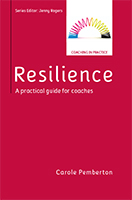
The Indian novelist Arundahti Roy recently wrote in the FT that ‘Historically, pandemics have forced humans to break with the past and imagine their world anew. This one is no different.’
What she has captured is what many people are recognising that their world has changed. It is much more than realising that much work can be done at home, and that we need less than we imagined.
It has made us aware of how a world with less traffic and pollution feels lighter. It has made us aware of our vulnerability both in terms of our health and our finances. It has made people recognise the importance of connection, and how constrained the world feels when so much of our culture is not available to us. It has made us expand our understanding of who a key worker is and the value they have in our lives. It has made us more aware of the risks of abuse when people are imprisoned in their homes together. The challenge is whether we can hold onto those awarenesses and use them to influence how we shape a post pandemic world.
The psychologists Tedeschi and Calhoun expressed the same sentiment in 2004 when they wrote of trauma as a seismic earthquake. It is an earthquake because it shatters the assumptions we have about the controllability of our world. In losing control, we then have to rebuild ourselves and the world we live in. However, they discovered in their research that the process of having our world’s shaken, rather than leading to a desire to get back to what was once leads to a process of reevaluation which they labelled ‘post traumatic growth’.
They pointed to a consistent set of shifts they saw when people have their world disturbed:
- A greater appreciation of life
- A strengthening of close relationships
- Increased compassion and altruism
- Finding new possibilities and purpose in life
- Greater awareness of personal strengths
- Creative growth
- Enhanced spiritual development
Arundhati Roy wrote of pandemics as opening up a portal, a gateway into another world, and we are seeing those gateways open in many of the dimensions that Tedeschi and Calhoun identified. From the simple act of clapping in appreciation of those who care for us, to the acts of kindness, the increased contact with friends and family, the creativity of how people are dealing with this time, and the space it is offering for us to consider how we want our lives to be going forward.
We have been offered a portal we never expected and would never have signed up for, but in experiencing that disruption rather than rushing back to what was we can carry on through that gateway and take our learning into shaping our post-lockdown world.
We can decide what we want to stay different as our doors open up again.

